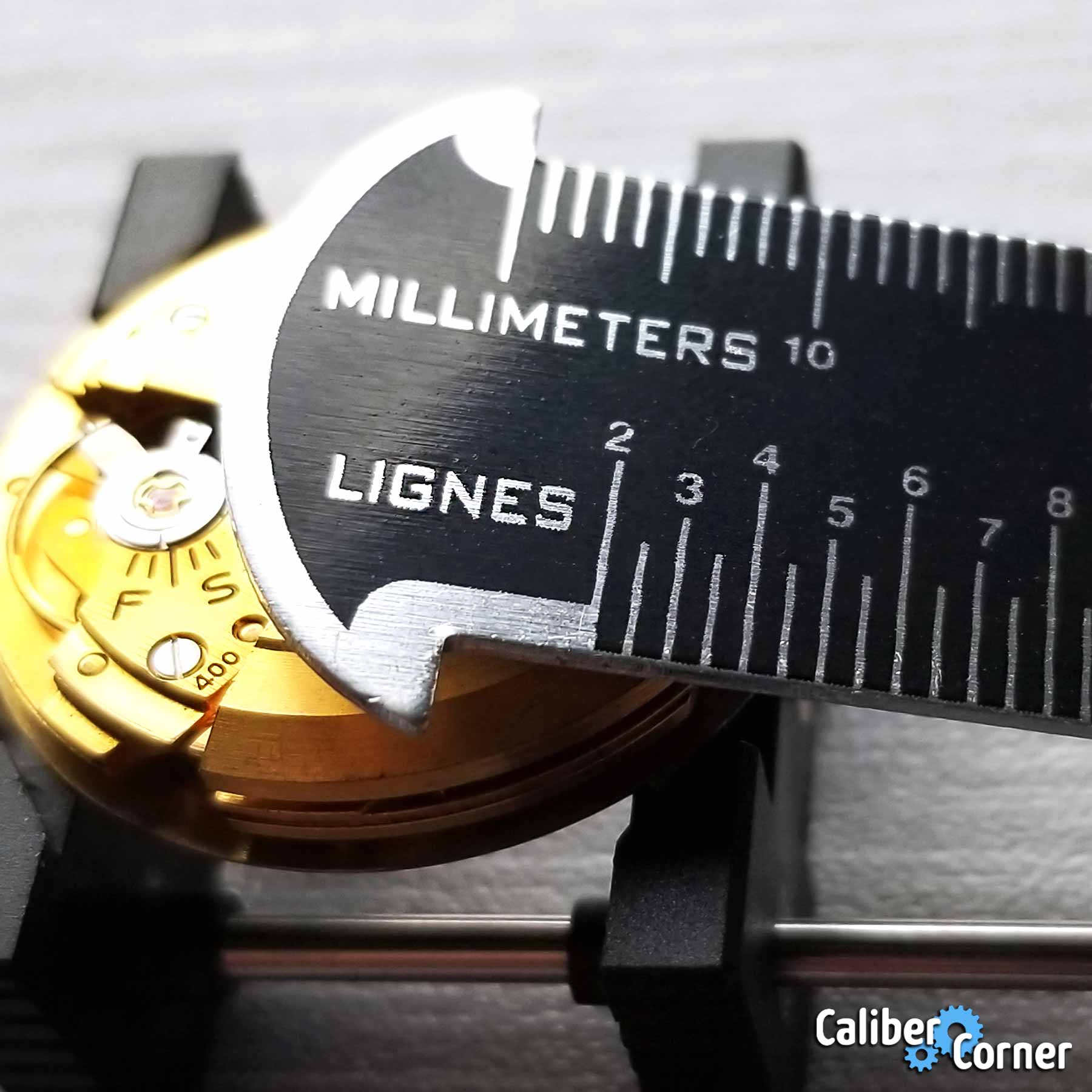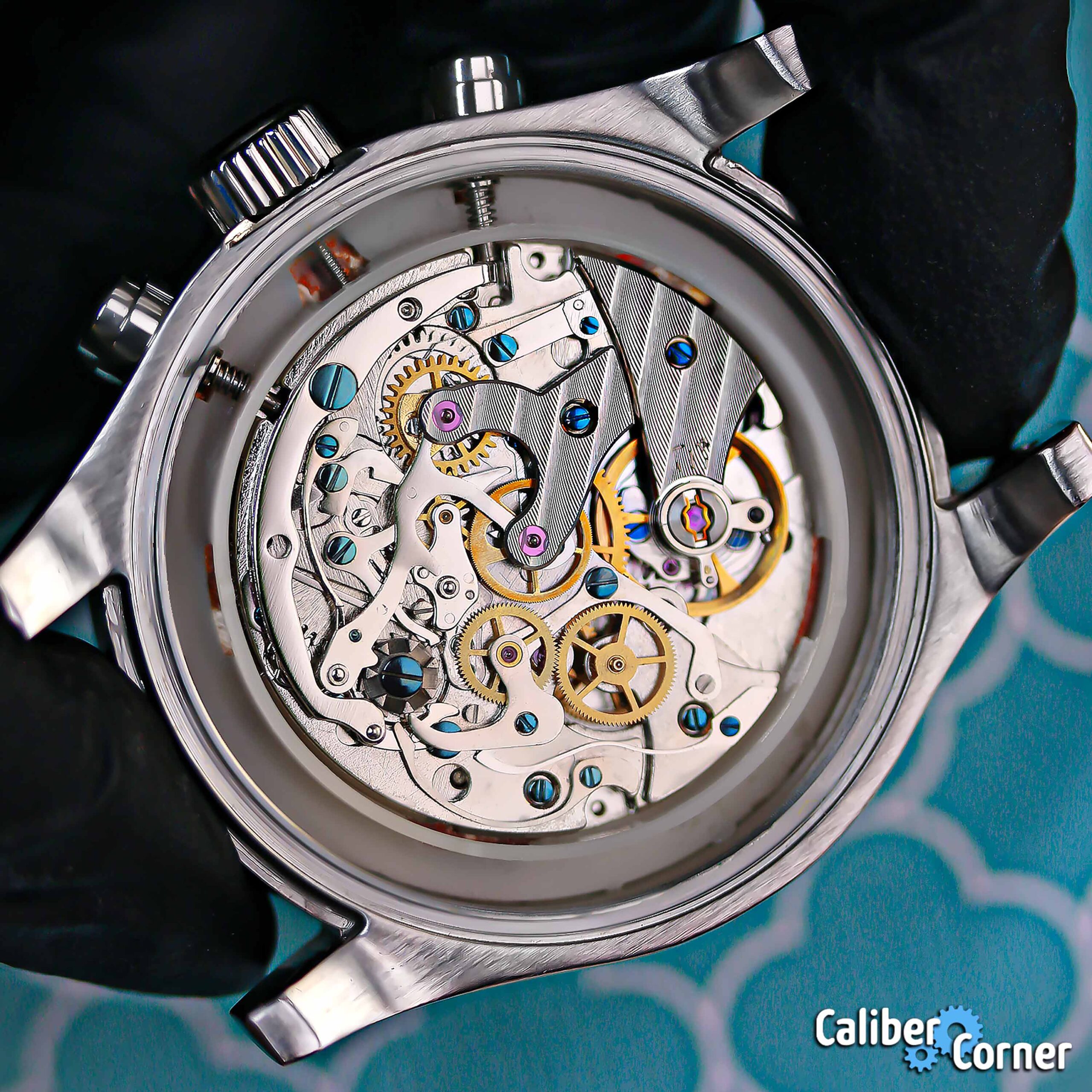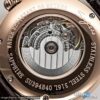If you’ve been in the Caliber Corner Community for some time, you’ve seen the word lignes here and there. What does it all mean? What is a lig-nez?!
Lignes is the French word for lines (and pronounced the same way), a unit of measurement for watch movements. Although most watch movements will have the diameters listed in millimeter (mm), you may also see linges listed – especially when dealing with raw movements.
Here is a brief history from Wikipedia:
The ligne or line or Paris line, is a historic unit of length used in France and elsewhere prior to the adoption of the metric system in the late 18th century, and used in various sciences after that time. The loi du 19 frimaire an VIII (Law of 10 December 1799) states that one metre is equal to exactly 443.296 French lines.
Interestingly, in addition to watch movements, the lignes unit of measurement is also used by some button and ribbon manufactures. Here is an explanation about lignes from ETA:
Following a centuries-old tradition, watchmakers use lines rather than millimetres to describe the size of the movement’s diameter. This measurement is generally indicated as a triple apostrophe, so 16 1/2 lines is written as 16 1/2´´´, or 37.22 mm diameter. The line, or Parisian line, is an ancient watchmaking measurement that predates metrification and is a direct descendant of the French pied (foot) measurement used under the Ancien Régime. Each line is equivalent to 2.2558 mm, which is rounded up to 2.26 mm for ease of calculation. In the past the French foot used to correspond to 12 inches measuring 12 lines each.
American watchmakers also had their own measuring system for watch movements, more on that here.
How to Measure Lignes
There are calipers and rulers that are set up for measuring lignes such as this one. If you don’t have a tool, you can convert mm to lignes the old fashioned way:
1 Ligne = 2.25583mm
And conversely 1 mm = 0.4433 ligne.
Representing Lignes
Caliber Corner posts as much information about each movement as possible – including the diameter in lignes and millimeters. When you see three apostrophes (”’) after the number, it’s not a typo. That’s the linges measurement.
Note that many font types and autocorrections can cause the ”’ to display incorrectly. Frustratingly, at the time of this post, the font type on Caliber Corner causes it to look like a quotation next to an apostrophe.
Lignes to mm to Inch Conversion Chart
| Lignes | Millimeters | Inches |
|---|---|---|
| ¼ | 0.05640 | 0.0222 |
| ½ | 1.128 | 0.0444 |
| ¾ | 1.692 | 0.0666 |
| 1 | 2.255 | 0.0888 |
| 1¼ | 2.820 | 0.1111 |
| 1½ | 3.338 | 0.1332 |
| 1¾ | 3.949 | 0.1554 |
| 2 | 4.517 | 0.1776 |
| 2¼ | 5.076 | 0.1998 |
| 2½ | 5.640 | 0.2220 |
| 2¾ | 6.204 | 0.2442 |
| 3 | 6.768 | 0.2664 |
| 3¼ | 7.332 | 0.2886 |
| 3½ | 7.895 | 0.3108 |
| 3¾ | 8.459 | 0.3330 |
| 4 | 9.023 | 0.3553 |
| 4¼ | 9.587 | 0.3775 |
| 4½ | 10.151 | 0.3997 |
| 4¾ | 10.715 | 0.4219 |
| calibercorner.com | calibercorner.com | calibercorner.com |
| 5 | 11.279 | 0.4441 |
| 5¼ | 11.843 | 0.4663 |
| 5½ | 12.407 | 0.4885 |
| 5¾ | 12.971 | 0.5107 |
| 6 | 13.535 | 0.5329 |
| 6¼ | 14.099 | 0.5551 |
| 6½ | 14.663 | 0.5773 |
| 6¾ | 15.227 | 0.5995 |
| 7 | 15.791 | 0.6217 |
| 7¼ | 16.355 | 0.6439 |
| 7½ | 16.919 | 0.6661 |
| 7¾ | 17.483 | 0.6883 |
| 8 | 18.047 | 0.7105 |
| 8¼ | 18.611 | 0.7327 |
| 8½ | 19.175 | 0.7549 |
| 8¾ | 19.739 | 0.7771 |
| 9 | 20.303 | 0.7993 |
| 9¼ | 20.867 | 0.8215 |
| 9½ | 21.430 | 0.8437 |
| 9¾ | 21.994 | 0.8659 |
| 10 | 22.558 | 0.8881 |
| 10¼ | 23.122 | 0.9103 |
| 10½ | 23.686 | 0.9325 |
| 10¾ | 24.250 | 0.9547 |
| 11 | 24.814 | 0.9770 |
| 11¼ | 25.387 | 0.9992 |
| 11½ | 25.942 | 1.0214 |
| 11¾ | 26.506 | 1.0436 |
| 12 | 27.070 | 1.0658 |
| 12½ | 28.198 | 1.1102 |
| 12¾ | 28.762 | 1.1324 |
| 13 | 29.326 | 1.1546 |
| 13½ | 30.453 | 1.1990 |
| 14 | 31.581 | 1.2434 |
| 14¼ | 32.046 | 1.2656 |
| 14¾ | 33.273 | 1.3100 |
| 15 | 33.838 | 1.3322 |
| calibercorner.com | calibercorner.com | calibercorner.com |
| 15½ | 34.955 | 1.3766 |
| 15¾ | 35.529 | 1.399 |
| 16 | 36.093 | 1.4210 |
| 16¼ | 36.657 | 1.4432 |
| 16½ | 37.221 | 1.4654 |
| 17 | 38.349 | 1.5098 |
| 17¼ | 38.913 | 1.5320 |
| 17¾ | 40.041 | 1.5764 |
| 18 | 40.605 | 1.5987 |
| 18½ | 41.733 | 1.6431 |
| 18¾ | 42.297 | 1.6653 |
| 19 | 42.861 | 1.6875 |
| 19¼ | 43.425 | 1.7097 |
| 19½ | 43.989 | 1.7319 |
| 20 | 45.117 | 1.7763 |
| 21 | 47.372 | 1.8651 |
| 22 | 49.628 | 1.954 |
| 23 | 51.884 | 2.0427 |
| 24 | 54.140 | 2.1315 |
| 25 | 56.396 | 2.2204 |
| 26 | 58.652 | 2.3092 |
| 27 | 60.907 | 2.3980 |
| 28 | 63.163 | 2.4868 |
| 29 | 65.419 | 2.5756 |
| 30 | 67.675 | 2.6644 |
Hopefully this guide helps you understand lignes more, if there is anything we missed or any questions, please leave them in the comments below!


 network of watch sites
network of watch sites













Recent Comments
Mido All Dial
My wife's 2024 Tudor m35800-0010 Clair de Rose is fast by about 8 minutes per…
Van der Gang (20053) uses a Soprod M100
Hello, Have you got any informations about date changing? I mean is it linked to…
I own a Seiko Quartz (Case 5039) built Feb 1982 with the 6533 movement. It's…
Miyota 0S20
Benjamin James Scarfour automatic uses this movement.